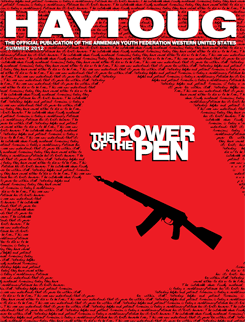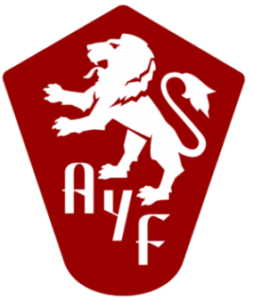AYF Attends IUSY World Congress 2012
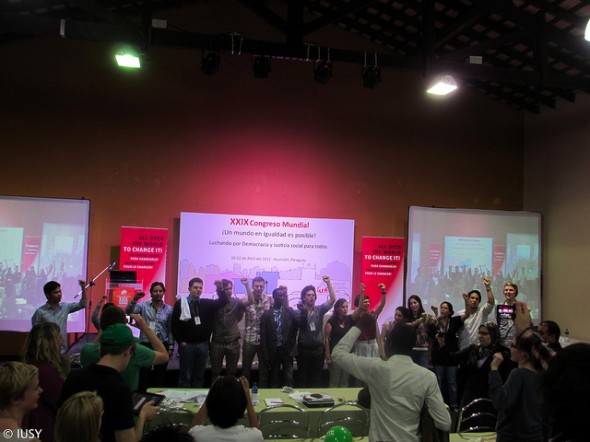
The Armenian Youth Federation (AYF) recently participated in the three-day World Congress of the International Union of Socialist Youth (IUSY) in Asunción, Paraguay. IUSY is the biggest political youth organization in the world, representing about 150 member organizations from more than 100 countries. IUSY is the youth wing of the Socialist International, bringing together the socialist, social democratic and labor political youth organizations from around the world that work to enhance principles of democratic socialism, equality, human rights and social justice.
The AYF, as a member organization, exercised its full member status by sending two delegates to the Congress. This year ARF Shant Student Association executive member Nora Kayserianand AYF South America executive member Guillermo Ferraioli Karamanian represented Armenia at the Congress. “This was an opportunity for AYF to share with the rest of the world’s leading youth organizations its mission and activities, while learning from and networking with other socialist parties from around the world,” stated Guillermo.
The World Congress entitled “An Equal World is Possible! Struggling for Democracy and Social Justice for all,” held its opening ceremony at the Parliament, where delegates listened to talks highlighting how the left in Latin America has taken the lead in the fight for democracy. Delegates also had the chance to meet the President of Paraguay, Fernando Lugo. The rest of the weekend was focused on the election of the new leadership, as well as the adoption of the IUSY Global Political Manifesto.
“It was inspiring to meet activists from around the globe who are fighting the same fight. While it is indeed an uphill struggle, we are not alone. Our struggle for democracy and social justice is one of hope and resistance and as long as we continue to fight for what we believe in, we will see change,” said Nora Kayserian.
The .2%
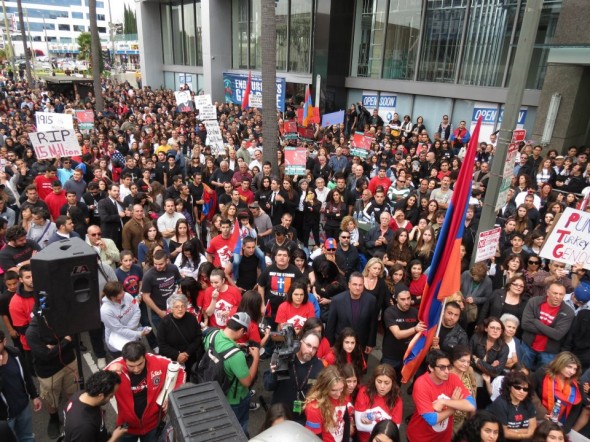
By: Gev Iskajyan
The 24th of April has come and gone for the 97th time since the Turkish government’s failed attempts to eradicate the Armenian race. That’s 1,164 months since the systematic murder, rape, and deportation of over a million and half Armenians began in the city of Constantinople.
849,720 hours since hundreds of thousands of men, women, and children marched through the scorching Syrian desert only to meet their end.
Yet we have allocated one day of our entire year to demand justice. Just one day to contain anger, frustration, and the struggle to right a wrong.
Many argue that Armenian efforts for justice have been stagnated by divisions amongst ourselves. However, our limitations are not based on differing ideology or philosophies; but rather priority.
We spend 0.2 percent (1/365) of our entire annual schedule to fight injustice. With those minimal collective efforts we have managed to become one of the most influential lobby groups in the United States. Over 21 Countries and 43 States have officially recognized the Armenian Genocide. Schools and colleges across the world are educating a new generation of youth about the atrocities of 1915. With the majority of us focusing on just one day of events and commemorations, we have achieved so much. Now imagine if we worked with the same passion and fervor for two days out of the year.
This does not highlight our shortcomings or failures but rather our potential.
A single 24 hour span of pride, anger, sadness, and effort is used to condense countless years of suffering and struggle. Protesting in the streets of foreign countries, we do not need the 24th to remind us of the Genocide. We are reminded every day we wake up away from our homeland. A single date does not represent the work of the countless who seek not only recognition but justice. It does not represent the struggle of those who died defending our very existence.
We have gone so far with marginal efforts. From Congressmen and Senators who champion our cause to countries like France who defend our history, our reach is only expanding and our strength is only increasing. Our fight is only beginning.
In an age where technology has made it effortless to organize the masses and bring our individual skills together for a collective good, we are left with no excuses in the pursuit of justice. By organizing and setting our goals beyond a single day of remembrance but on realistic measures of recognition and reparations, we can multiply our growing strength.
We are the architects of our future and the tools we need are laid out for us.
As the 24th of April passes once again, we must remember that the fate of our cause is not determined by time or external forces. It is not determined by the political climate of the United States, or even by the malevolent efforts of the Turkish Government. The fate of our cause is in our hands and our hands only, and it’s going to take more than just one day to turn our fate into reality.
St. Vartan and the Battle of Avarayr
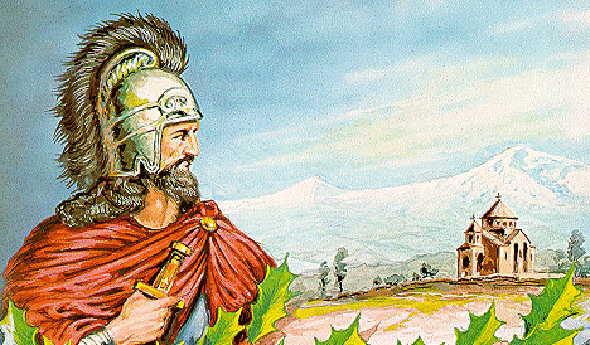
Many of us are beginning to think that February is an empty month in the Armenian calendar. Or that Saint Valentine’s Day is the only significant holiday. However, the idea that this is traditionally an Armenian festival is incorrect. In fact, for those unaware, the Armenian equivalent for celebrating love and affection between companions takes place on February 4th, under the Saint Sarkis (Սուրբ Սարգիս) name. More to the focus of this article though, is the commemoration of the Battle of Avarayr (Ավարայրի ճակատամարտը) on February 16th.
This battle came to be out of necessity for continuity as a People: the Persian Empire wanted Armenians to abandon their faith. Their king, King Yazdigerd II, loathed Christianity and wished to destroy their individuality on the whole.
Those who grew up going to an Armenian school have undoubtedly heard of Vartan Mamigonian (Վարդան Մամիկոնեան), and the epic battle during which he led the Armenian forces against a vastly outnumbering Persian army. Vartan, who was later canonised, was of noble lineage whose family tree includes Saint Gregory the Illuminator (Սուրբ Գրիգոր Լուսավորիչ). His father, however, was General Hamazasp (Սպարապետ Համազասպ) and, like him, Vartan became a soldier. He was a highly respected soldier at that, with integrity and wisdom: in addition, he had a strong Christian belief. The fact that he had Holy Communion with his soldiers; prayed, recited the 23rd Psalm and shared food with them, all prior to the commencement of battle, can attest to these.
It was in this period immediately before the battle when Vartan was quoted as saying “We have served until now mortal kings… now it is time to serve the immortal king”. Vartan’s speech instilled inspiration and stimulated his troops towards defending not only their religion but also, in the wider scheme, their culture and entire way of life. Finally, the battle commenced on May 26th, 451 AD, on the Avarayr Plain (Ավարայրի Դաշտ). Vartan Mamigonian led 66,000 Armenians against an army outnumbering them almost 4-to-1 and consisting of war elephants too.
Many Armenian martyrs were made that day – Vartan Mamigonian included – but, while the battle was lost, their sacrifice was not in vain. The Persian king, astounded by the valour of his opponents and acknowledging that this could only stem from their passion for their beliefs, developed a great respect for Armenians and put an end to his attempts at converting them. In this way the Armenians of the time lived on in relative peace, their traditions safeguarded for another period.
We’ve suffered countless episodes such as this where, for one reason or another; our rights, customs, traditions, faith, freedom and uniqueness have been challenged. We’ve endlessly endured stiff oppression, but, as a brilliantly proud and zealous People, we’ve largely staved off assimilating.
1600 years have since passed, our identity all the while maturing, and we’ve spread across the globe achieving many things. As a persevering people we must continue to uphold our identity in whichever corner of the world we find ourselves. Wherever we may be and whatever we pursue we all share a common history: a story of constant struggles for peace which unites us and enriches our lives. As Hrant Dink, Serj Tankian and Monte Melkonian (to name a few) have done, by digging deep towards our roots we can find and adopt the same spirit with which Vartan’s soldiers fought in defending our heritage.
Heros Jojaghaian
AYF London “Khanasor” Chapter
Perjuring the Past: On Criminalization of Armenian Genocide Denial
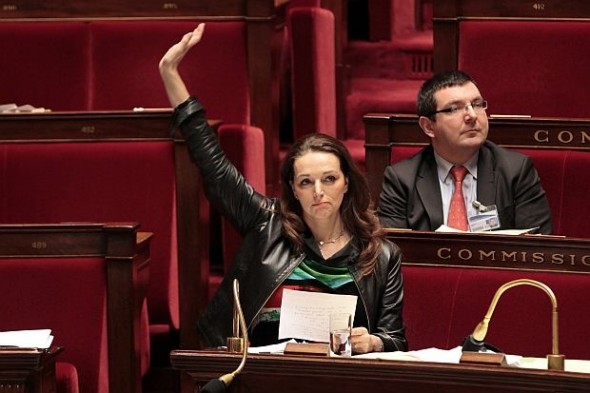
BY VACHE THOMASSIAN
All that makes existence valuable to any one depends on the enforcement of restraints upon the actions of other people.
–John Stuart Mill (On Liberty)
Last week, the French Senate approved a bill that, in effect, makes it a criminal offense to deny the genocide committed by Ottoman Turks against Armenians. Predictable Turkish “outrage” has included threats to recall its Ambassador to France, restrict trade between the nations, and a move to deport Armenian laborers from Turkey. The legislation has also aroused public debate about the freedom of speech and expression as it relates to genocide denial. While the law should be applauded as a milestone in punishing an ongoing genocide, some are misrepresenting it as a violation of a universal right.
The purpose of the law (as stated by the French Senate; translated into English), “aims to punish those who have publicly made an apology for, trivialized, or denied crimes of genocide, crimes against humanity and war crimes…or [crimes] recognized by France.”
This bill is written in the same spirit as the Gayssot Act, enacted in France in 1990. The Gayssot Act responded to “revisionism” by individuals who justified their writings by their (perceived) status as historians, who challenged the existence of the Holocaust. To the French government these revisionist arguments constituted a contemporary form of anti-Semitism that warranted a limitation of the freedom of speech in France. The law has since been challenged and upheld, by the United Nations Human Rights Committee, as a necessary restriction of expression “intended to serve the struggle against racism and anti-Semitism.” 1
The committee’s judgement mentioned Article 19 of the International Covenant on Civil and Political Rights as justification for upholding the law. Article 19 of the Covenant states that “Everyone shall have the right to hold opinions without interference, and everyone shall have the right to freedom of expression…[however,] the exercise of these rights carries with it special duties and responsibilities [and] may therefore be subject to certain restrictions [which are] provided by law and are necessary for respect of the rights and reputations of others; [and] for the protection of national security or of public order.”
In recognizing the legality of the Gayssot Act, the Human Rights Committee acknowledged the duality of “the freedom of speech and expression” as both a right and a duty. Free speech is only a right as far as it does not infringe on rights of others to be free from assaults on their dignity. Moreover, free speech carries with it the duty to act responsibly and with respect to others and to society as a whole.
These laws highlight differences between European and American value systems and resulting legal responses. While the United States prides itself on being a protector of individual liberties2, European countries place a higher onus on the inviolability of human dignity.3 For this reason, denialist speech is not understood to be a right, rather it is seen as an indefensible form of racism.
Regardless of geographic location, it is absurd to think that societies exist today or should exist, which place no boundaries on speech and expression (consider laws that prohibit child pornography, advertising cigarettes to kids, or exposing state secrets). So the question is not whether to place limits, rather the question is where to place the limits.
Even in the United States, considered the bastion of liberty, the concept of free speech has never been absolute. US courts have agreed that not all speech is protected speech. Unlawful speech, under the United States Constitution, includes defamation, perjury, incitement and several other categories.
Unlawful Speech (under the US Constitution)
Defamation: False statements about another person, which causes harm to that person.
Perjury: False statements made during a judicial proceeding while under oath to speak the truth.
Incitement: Speech that is intended to cause an immediate breach of the peace.
To better understand where the limits to speech and expression should be, the question that must be asked is, “Does the speech in question further or hinder our society’s most fundamental values/goals?” While it is said, “truth emerges from the clash of ideas,” governmental intervention is necessitated in many instances.
In American society, we value dignity and aim to protect it from untruths; therefore we punish defamation because it spreads lies, which hurt people’s reputation and honor. We value due process, a truthful historical record and honesty; therefore we punish perjury because false testimony becomes a part of court transcripts that can be used to unjustly convict (or acquit) others. We value peace and lawfulness; therefore we punish incitement because instigating illegal activity is dangerous.
Genocide is understood to be a crime against all of humanity, and it remains society’s obligation to punish it and prevent its recurrence. In order to do so, a strong message must be sent that recognizes historical facts and simultaneously condemns their distortion. This is important, not to “prove” the history to the perpetrators, but to safeguard the education of future generations, and to isolate and discredit the revisionists.
The International Association of Genocide Scholars has stated, “The single best predictor of future genocide is denial of a past genocide coupled with impunity for its perpetrators.” Since denial is the last phase of genocide, Turkey represents a continual threat to Armenia’s national security (not to mention the safety of its minority populations) as an unrepentant human rights violator, and a threat to the international community through its audacious state-sponsored denial campaign and political bullying. Steps, such as those taken by France, should be adopted without cowering to threats of reprisal, implicit4 or explicit5, from the Turkish government.
The notion that today’s Turkey is organically and voluntarily coming to terms with its past, and should therefore be left to its own devices is dangerously misguided. If not for international condemnation, resulting from decades of global activism, the Armenian genocide would be a non-issue relegated to the annals of history. Moreover, Armenian genocide-related human rights violations continue to this very day in Turkey, from the failure to investigate state culpability in Hrant Dink’s murder, to the arrest of Ragip Zarakolu, to the calls for new deportations. Therefore, it is justifiable and reasonable for the international community to condemn Turkey through their legislative bodies.
External pressure and international isolation have finally led to discussion about the genocide inside of Turkey. However, as long as the government of Turkey continues its current policies, these measures will remain necessary to raise the issue, for the sake of the victims, their descendants, Turkish citizens, and the international community at large.
Notes
1. In 1993 Holocaust-denying “academic” Robert Faurisson challenged the legality of the Gayssot Act. He claimed the law curtailed his right to freedom of expression and academic freedom in general, guaranteed by the International Covenant on Civil and Political Rights (ratified by 67 nations, including France: 1980; Turkey: 2003; Armenia: 1993; United States: 1992). The United Nations Human Rights Committee found that Faurisson was convicted for “violating the rights and reputations of others” and ruled that the Gayssot law was a necessary restriction of his expression “intended to serve the struggle against racism and anti-Semitism.”
2. Seen in the Bill of Rights, most notably in the First Amendment’s protection of free speech and press.
3. Seen in Article 1 of the Charter of Fundamental Rights of the European Union; Article 4 of the Declaration of the Rights of Man; Article 1 of The Constitution of Germany
4. Concerning the well-being and safety of the remaining Armenian communities within Turkey today
5. Concerning threats from the Turkish government to severe political ties, trade relations, and military cooperation with countries that condemn the Armenian genocide and its denial
Vaché Thomassian is the Chairperson of the ARF “Shant” Student Association, Editor of Haytoug magazine, and a member of the executive board of the Loyola Law School Armenian Law Students’ Association.
Must See: Armenia, The Historical, Notable and Not-So-Traditional Sites of Our Homeland
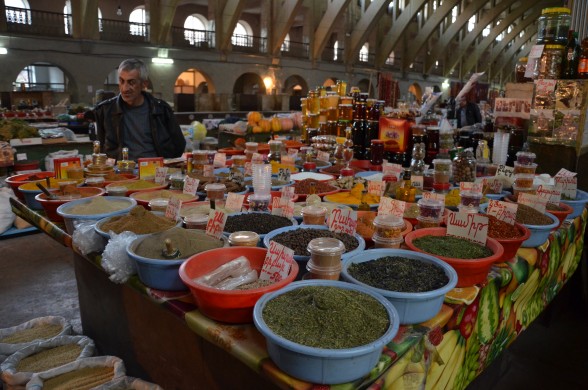
Ani and Maro are two friends who met in Armenia and proceeded to have wild adventures together. At times they have dared called themselves archeologists, sociologists, modern-day explorers, gastro-bloggers and socialites. Today they merely call themselves freelancers (read: uninsured). These are a few of their favorite things:
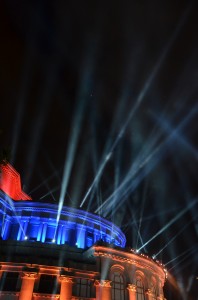 Soviet choo choo: Head South down Mesrop Mashtots Ave and turn right after you pass Arami St. After a stroll through the old park with its defunct concrete fountains, a long graffiti-covered tunnel will lead you to Hrazdan Gorge. Head left as you exit the tunnel, travel past old carousels and walk down some stairs on the right and, as if from a dream, a Soviet-era children’s choo choo train will reveal itself in the distance. Hang out along the river here and watch underwear-clad local elderly gents as they swim in the river. That mysterious coke bottle they offer you is probably filled with homemade vodka, so beware.
Soviet choo choo: Head South down Mesrop Mashtots Ave and turn right after you pass Arami St. After a stroll through the old park with its defunct concrete fountains, a long graffiti-covered tunnel will lead you to Hrazdan Gorge. Head left as you exit the tunnel, travel past old carousels and walk down some stairs on the right and, as if from a dream, a Soviet-era children’s choo choo train will reveal itself in the distance. Hang out along the river here and watch underwear-clad local elderly gents as they swim in the river. That mysterious coke bottle they offer you is probably filled with homemade vodka, so beware.
Opera Square: Have a cup of the cheapest (and best) Armenian coffee in town at Cafe Meghedi, or sample the Beef Stroganoff (not the best…in fact, avoid it). Oftentimes there are concerts and events held in Opera Square, and it is also a favorite gathering spot for opposition protesters.
Attend a Soccer Game: Now that Armenia has a winning team (Ireland, we’ll get you next time), come out and show your support. You won’t see these boys taking cigarette breaks at halftime and you’ll be amazed to see them actually pass the ball. The excitement in the stadium is infectious and you will learn what hoop tur really means.
Roof and Cafe of the National Gallery: After a quick stop to see the world’s oldest shoe, head upstairs to the National Picture Gallery and check out works by Hovhannes Aivasovsky, Vardges Surenyants and Gevorg Bashinjaghyan. Then walk out onto the roof on the ninth floor and enjoy a unique view of Yerevan from above. The cafe there is usually empty and is a quiet place, sit and have coffee, and be ignored by the staff.
Vernissage and Cafeteria: Vernissage is an open-air bazaar where you can find anything from puppies to fine china. We personally enjoy Vernissage when it’s cold out and the sidewalks arecovered in a thick layer of black ice, but to each her own. Don’t miss the cheapest meal you can probably find anywhere in the world at the Vernissage cafeteria. It’s an unmarked, unnamed spot just off the bazaar on Aram St., and to the best of our knowledge the vendors also store paintings there. Half the fun is in finding the place, follow the scent of vodka and dolma or ask a ruddy art vendor for directions. The proprietress will offer you The Greasiest Comfort Food Ever.
Markets beneath Barekamutyun Metro and in the alley on Tigran Metz Ave on the left after the man who makes hats: Ani’s favorite gift for Maro has always been oversized underwear printed with glittery poetry and there are only a few spots to find just the right ones. At either of these markets you’ll be able to pick up a kebab and have your watch fixed all while selecting non-stick cookware and an Adibas sports-bag.
Juice Stand in Sakharov Square: Fresh juices in Armenia are simply called “fresh”. This spot is usually only open in the summer and serves the best fresh this side of Vernissage. Watch out for inferior, flashier imitations.
Pak Shuka (Covere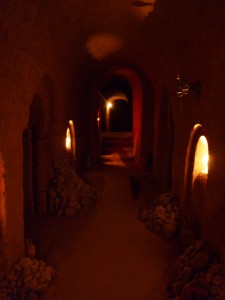 d Market) and Blue Mosque: Head to the back of the covered market to meet the tuti oghi vendor who will have you sample his wares in a back room with basterma hanging from the ceiling. Please be aware that you will be in close proximity of the spice lady who will insist on you taking one or several of her favorite mixes. Exit the market and cross the street to visit the beautiful 18th century Blue Mosque.
d Market) and Blue Mosque: Head to the back of the covered market to meet the tuti oghi vendor who will have you sample his wares in a back room with basterma hanging from the ceiling. Please be aware that you will be in close proximity of the spice lady who will insist on you taking one or several of her favorite mixes. Exit the market and cross the street to visit the beautiful 18th century Blue Mosque.
Parpetsi: Enjoy the night life on Ghazar Parpetsi St. Start off with a coffee and a crepe at Gemini, then continue on to check out the atmospheres at various local bars including 26, D.I.Y, Metro Music and Rock Bar. Take a break for a burger at newly opened Factory and stop in to hear a jam at Syncopat on Pushkin where you can join in if you’re feeling brave. Continue down Pushkin to check out the vibe at Calumet and Beatles, and finish on Saryan at Tro’s Pub wi th a game of foosball.
Master Levon’s Cave: Only in Armenia can a request from your wife to dig a potato pit result in a twenty-year quest to dig a cave by hand. The resulting wonder is 21 meters deep and spans 300 meters, a glorious cavern that is testament to one man’s vision. Located in Arinj Village.
Stop Club: The best place to hear rock music in Yerevan.
Sasuntsi Davit train station: Make use of new digital screens to catch a train to Gyumri, Lake Sevan, Tbilisi or other places from this beautiful Soviet-era train station. On longer train rides, please note hidden charges like pillow cases and be prepared for a stern knock on your door at 4am for passport control.
Old Houses in Yerevan: Search for Yerevan’s past in the areas near Northern Avenue and off Amiryan St. between Abovyan St. and Mashtots Ave. These homes are quickly disappearing and they are definitely worth a visit.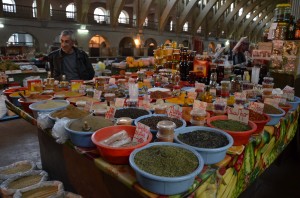
Luna Park: A psychedelic Soviet-era amusement park where you can lose your life on a roller coaster while watching a Rabiz singer and eating popcorn. If you want to take your beer on the Ferris wheel they won’t check your bag. Don’t miss the Haunted House where your only fear is that you may trip because there is not a stitch of light in the place.
Is it edible? While traveling through Armenia we suggest that you expand your culinary horizons. Visit different restaurants, don’t be afraid to point to and order random things off the menu. Go ahead, dip some dried lavash into a steaming bowl of khash (cow knuckle soup) and chase it down with a shot of vodka, your life will never be the same.
When the dog bites, when the bee stings, when you’re feeling sad…go do something crazy with your friends in Armenia. Stop by Cafe Meghedi for a coffee, maybe you’ll run into Ani and Maro and they can tell you about the time they ate questionable kebab and got sick in Abovyan. But trust us on the Beef Stroganoff.
Open Letter To The Armenian Diaspora
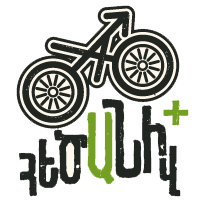 We are representatives of various environmental groups, writing this message to Spyurq, Armenia..
We are representatives of various environmental groups, writing this message to Spyurq, Armenia..
The People of Armenia desperately need the voice and actions of Spyurq. The people of Armenia have lived in fear and slavery for far too long and many have lost faith and aspiration for any betterment.
Our small group is trying to smash these stereotypes that do not allow us to breath freely, create and develop without damaging our environment.
Today, in the name of development, massive mountains are being destroyed in order to mine gold, uranium, molybdenum, copper, iron, silver and other metals—all aimed at making profit. For the sake of so-called “development” and “creating employment”, Armenians are cutting down their virgin forests and turning our country into a barren, deserted, unpopulated piece of land. The effects of mining can already be felt today and their impact will be multiplied for coming generations: birth defects, physical and mental disabilities, forced abortions and infertility.
Once a land for creativity, Armenia is now turning into a sterile and poisonous place, which is dangerous for humans and other species.
Together we cannot allow this to continue. We are disturbing the balance of the Earth and killing ourselves— doing violence towards our own lives and that of our future generations. Presently, environmentalists are considered to be “anti-governmental” forces. Our sole purpose is to live in harmony with the rules of nature, be full-fledged citizens, and be creative and non-violent. Many artists and intellectuals maintain silence on these issues because they do not want to appear to be in conflict with government authorities—this is unforgivable.
We hope there are people in Spyurq who are ready to fight with us to bring about change.
Please, AWAKEN the Armenian society, government, Diaspora with your inspiring voices and words. Raise these issueswith articles, discussions, and direct actions.
Help the Armenian people stop cutting the branch on which we are all sitting.
Collect armies of thousands and wake those who are asleep. For the sake of Life, Nature and Being.
AMEN
Bike+ is an initiative started in 2006 by young environmental activists in Armenia. They aim to educate the public about environmental and ecological issues through weekly bike rallies and rides.
Khatchkars
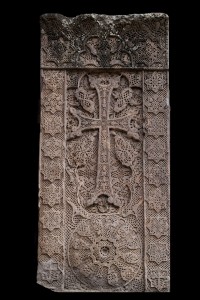 Erected adjacent to the entrance of newly established cities and churches, or to commemorate military victories, khatchkars (cross-stones) have traditionally signified genesis.
Erected adjacent to the entrance of newly established cities and churches, or to commemorate military victories, khatchkars (cross-stones) have traditionally signified genesis.
Their detailed handwork characterizes many aspects of the establishment they represent. Though the contemporary use of khatchkars as gravestones have strayed from their original purpose, khatchkars have been an exclusive aspect of Armenian culture since the 9th century.
The carvings reached their peak between the 12th and 14th centuries and have remained cultural icons since. Most notably located in the historic region Nakhichevan (currently occupied by Azerbaijan), khatchkars are common throughout the Armenian Nation.
Home to the world’s largest khatchkar cemetery, the city of Old Jugha in Nakhichevan, was the nerve center of khatchkar production and distribution. Since being arbitrarily placed under Azeri control, during the Soviet-era, the area’s native Armenians have been depopulated, leaving behind precious artifacts of what the city once was. In an effort to erase all traces of Armenian-ness, the Azeri government has implemented a campaign to destroy, remove, and pave over culturally significant sites. The destruction of khatchkars has brought condemnation from the European Union, UNESCO, as well as several other international organizations and diplomats. However, the occupation and demolition continues.
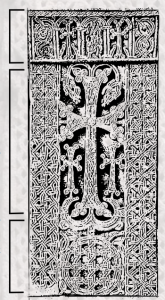
Upper Part
Heavenly figures are commonplace along the top portion of traditional khatchkars. This horizontal strip signifiesparadise or the house of God where individuals attain salvation. Depictions of birds, angels, saints and Christ himself are prevalent along the commonly protruding heading of the khatchkar.
Center Part
No khatchkar is complete without a cross. Universally found in the center of the stone, the cross itself represents Jesus Christ, arms spread, crucified. This shows Christianity’s role as the holy mediator between the heavens above and the earth below. Therefore, the formation and alignment of the khatchkar as a whole suggests that Jesus is the link between eternal life and humanity.
Lower Part
Earthly decorations are customary alongside the large spherical (or triangular) emblem that is universal among khatchkars. This represents earth, the mortal home of mankind. Natural figures such as leaves are customary near the edge of the stone. These leaves symbolize the link the khatchkar as a whole shares with the natural world. It is said that the stone receives nutrients from the soil that it is erected upon because it is a part of the earth.
“I want for Armenians what I want for Kurds’: An interview with Mayor Abdullah Demirbas

DIYARBAKIR, Turkey (A.W.)—Abdullah Demirbas is a man on a mission. The mayor of Diyarbakir’s central district strives to restore some of the city’s multi-cultural and multi-ethnic character through a series of initiatives to renovate places of worship, adopt multi-lingualism, and encourage those with roots in the city to return.
I sat down with Demirbas in his office in Diyarbakir on Oct. 23.
“For decades, we were told, ‘People [of different cultures] can’t live together, so we won’t tolerate difference, we will make them all the same,’” Demirbas laments. “Ours is an effort to restore what was lost during the state’s campaign to erase different identities, faiths, and cultures in the city.”
From the moment a visitor enters the city, signs of this multi-cultural approach manifest themselves, literally. Diyarbakir is the first city in Turkey to welcome its visitors with signs in Armenian.
“We could have done it in Turkish and Kurdish only. But these lands do not belong to the Turks and Kurds alone. They are also the lands of Armenians, Assyrians, and Chaldeans,” the Kurdish mayor explains.
These signs are not just for visitors, but constitute an effort to change mindsets. “We want the people living in the city to realize that historically, Diyarbakir has always been a multi-cultural city,” he notes.
More than 100,000 Armenians lived in the Diyarbakir province in 1914. Although mostly peasants living in villages like Palu and Lice, the majority of the tradesmen in the province were also Armenian. In turn, Armenian craftsmen and artisans constituted a significant presence in the province.
The Armenian Genocide shattered this vibrant community. Diyarbakir witnessed one of the most violent and comprehensive campaigns of massacre in the Ottoman Empire, with most Armenians being killed outside the city 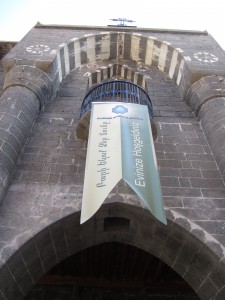 walls. The Armenian wealth was confiscated by the authorities and local elites and, within a few years, the centuries-old Armenian presence in the province was erased.
walls. The Armenian wealth was confiscated by the authorities and local elites and, within a few years, the centuries-old Armenian presence in the province was erased.
Demirbas does not mince his words when talking about the Armenian Genocide. “Our grandparents, incited by others, committed wrongs. But we, their grandchildren, will not repeat them. Not only that, but we will also not allow others to repeat them,” he says. “We learned from the past. Those lessons inform our actions in the present, and will continue informing them in the future.”
The mayor insists that he does not believe in “dry apologies,” but actions that demonstrate genuineness and sincerity. He sees the renovation of Surp Giragos as one manifestation of this approach. “Today, we are not simple asking for forgiveness in a dry fashion,” he notes. “I am a Kurd. And I want for Armenians what I want for the Kurds.”
“What is your message to the Armenians who were uprooted from their ancestral lands?” I ask him. He changes his posture, looks at me straight in the eyes, and says, “Return! At least come and find your homes and your lands. If you can find your old houses, renovate them! Have a home here too. This is your motherland. Other lands cannot and will not be your motherland. Come to your lands. We want to correct the past wrong. This is our message!”
Demirbas has suffered dearly for his initiatives and for being an outspoken critic of the Turkish state. Twenty-three lawsuits have been filed against him, he says, asking for 232 years of imprisonment. “I am the only mayor in Turkey who was forced out of his post. I was imprisoned for two years for my opinions and policies, but when I returned, I was re-elected with an even bigger margin,” he points out.
Diyarbakir, a predominantly Kurdish region, promises to become an oasis of multi-culturalism in a desert of denial and oppressive policies. The strategy of embracing all cultures—as opposed to struggling solely for Kurdish autonomy and rights—could serve as an example for other Kurdish-dominated municipalities in the southeast.
Demirbas’s efforts are not lost on the international community. The European Union and the U.S. have encouraged Diyarbakir’s initiatives and restoration efforts. The EU provided a grant to highlight the city’s historic and 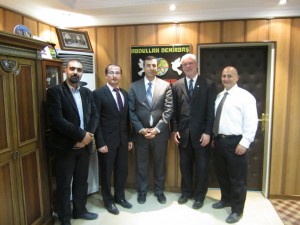 cultural heritage. The U.S. Ambassador to Turkey, U.S. consuls in Istanbul and Adana, and embassy staff attended the Oct. 23 mass in Surp Giragos. The consuls also attended the consecration of the church the day before. “Our multi-cultural approach is in line with theirs,” the mayor notes.
cultural heritage. The U.S. Ambassador to Turkey, U.S. consuls in Istanbul and Adana, and embassy staff attended the Oct. 23 mass in Surp Giragos. The consuls also attended the consecration of the church the day before. “Our multi-cultural approach is in line with theirs,” the mayor notes.
The Turkish state, on the other hand, is far behind, argues Demirbas. “There was no representative from the state today [in Surp Giragos]. But they will come. They will have to. And it all depends on our struggle,” he says. “I was thrown in prison, my 16-year-old son has joined the PKK and is on the mountains, and [the state] will harass me again, they will imprison me again, even something worse might happen to me, but I act based on my convictions. And one day they, too, will come.”
The preceding article originally appeared in The Armenian Weekly on November 05, 2011.
Visit ArmenianWeekly.com for further coverage of Khatchig Mouradian’s visit to Western Armenia.


